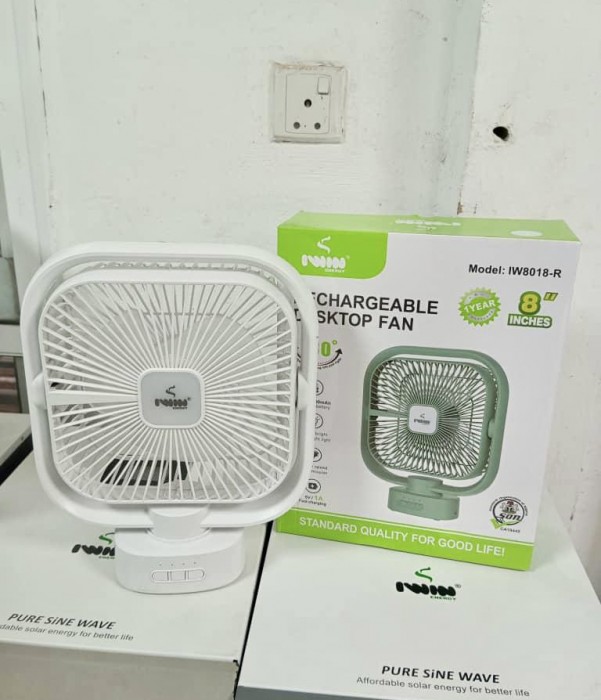luật chơi bài xì tố là một trò chơi giải trí nổi bật và đang thu hút sự chú ý của đông đảo người chơi trong thời gian gần đây. Với những trải nghiệm độc đáo và phong cách chơi đa dạng, luật chơi bài xì tố không chỉ mang đến niềm vui mà còn giúp người chơi phát triển tư duy logic và khả năng chiến lược.
Tìm Hiểu Về luật chơi bài xì tố Và Lịch Sử Hình Thành
-1920w.png)
luật chơi bài xì tố đã ra đời từ những năm đầu của thế kỷ 21, nhanh chóng chiếm lĩnh thị trường game trực tuyến tại Việt Nam. Trò chơi này được thiết kế với giao diện thân thiện cùng nhiều tính năng hấp dẫn, nhắm đến đối tượng người chơi từ trẻ em cho đến người lớn.
Sự Hình Thành Của luật chơi bài xì tố
luật chơi bài xì tố xuất hiện với mục tiêu cung cấp một nền tảng giải trí an toàn, nơi người dùng có thể tham gia vào các trò chơi thú vị mà không lo về yếu tố bạo lực hay tiêu cực. Qua thời gian, luật chơi bài xì tố đã chứng minh được sức hút của mình thông qua số lượng người chơi ngày càng tăng.
Nền tảng này không chỉ đơn giản là một trò chơi mà còn là một cộng đồng kết nối những tâm hồn yêu thích sự sáng tạo và chiến lược. Người chơi có thể tham gia vào các trận đấu, bàn luận, chia sẻ kinh nghiệm và thậm chí kết bạn mới trên khắp cả nước.
Những Điểm Nổi Bật Của luật chơi bài xì tố
Tại sao luật chơi bài xì tố lại trở thành một trong những lựa chọn hàng đầu trong thế giới game trực tuyến? Đó chính là nhờ vào việc tích hợp nhiều thể loại trò chơi khác nhau như bài, cờ, đua xe và các mini-game hấp dẫn. Điều này giúp cho người chơi luôn có cảm giác mới mẻ và không bị nhàm chán khi tham gia.
Ngoài ra, luật chơi bài xì tố còn thường xuyên tổ chức các sự kiện, giải đấu lớn với những phần thưởng giá trị, thu hút hàng triệu người tham gia. Đây chính là một trong những yếu tố quan trọng giúp luật chơi bài xì tố khẳng định vị thế của mình trong lòng người chơi.
Trải Nghiệm Chơi Game luật chơi bài xì tố

Một trong những lý do khiến luật chơi bài xì tố thu hút được một lượng lớn người chơi là bởi trải nghiệm chơi game vô cùng thú vị. Khi tham gia vào trò chơi, người chơi sẽ được đắm chìm trong không gian sống động và đầy màu sắc.
Giao Diện Người Dùng Thân Thiện
Giao diện của luật chơi bài xì tố được thiết kế rất dễ sử dụng, phù hợp với mọi lứa tuổi. Người chơi có thể dễ dàng tìm kiếm các trò chơi mà họ yêu thích mà không gặp khó khăn nào.
Đặc biệt, luật chơi bài xì tố cũng chú trọng đến việc tối ưu hóa trải nghiệm người dùng trên các thiết bị di động. Điều này có nghĩa là người chơi có thể thỏa sức chơi game ở bất kỳ đâu, bất kỳ lúc nào chỉ với một chiếc smartphone.
Đồ Họa Và Âm Thanh Chất Lượng Cao
Không chỉ dừng lại ở giao diện, luật chơi bài xì tố còn chăm chút cho từng chi tiết đồ họa và âm thanh trong trò chơi. Từ hình ảnh sắc nét đến âm thanh sống động, tất cả đều tạo nên một bầu không khí hấp dẫn, khiến người chơi cảm thấy như đang thực sự tham gia vào một cuộc phiêu lưu mạo hiểm.
Mỗi trò chơi trong luật chơi bài xì tố đều có những đặc điểm riêng, từ đó giúp người chơi dễ dàng phân biệt và chọn lựa theo sở thích cá nhân. Việc này càng làm tăng thêm sự đa dạng và phong phú cho trải nghiệm chơi game.
Các Tính Năng Hấp Dẫn Trong Trò Chơi
luật chơi bài xì tố không ngừng cập nhật và cải tiến các tính năng trong game để đáp ứng nhu cầu ngày càng cao của người chơi. Các tính năng này bao gồm hệ thống nhiệm vụ hàng ngày, bảng xếp hạng, và nhiều hoạt động xã hội.
Hệ thống nhiệm vụ hàng ngày không chỉ giúp người chơi có thêm động lực để tham gia mà còn tạo cơ hội nhận được những phần thưởng hấp dẫn. Bảng xếp hạng giúp người chơi cạnh tranh và khuyến khích họ nâng cao kỹ năng chơi.
Chiến Lược Chơi Game luật chơi bài xì tố Hiệu Quả

Để trở thành một người chơi giỏi trong luật chơi bài xì tố, không chỉ cần may mắn mà còn phải có những chiến lược chơi hiệu quả. Dưới đây là một số bí quyết giúp bạn thành công hơn trong mỗi ván chơi.
Hiểu Rõ Luật Chơi
Điều đầu tiên và quan trọng nhất là bạn phải hiểu rõ luật chơi của mỗi trò chơi mà bạn tham gia. Mỗi trò chơi trong luật chơi bài xì tố đều có những quy tắc riêng, việc nắm bắt chúng sẽ giúp bạn tránh được những sai lầm đáng tiếc.
Bên cạnh đó, việc hiểu rõ luật chơi còn giúp bạn áp dụng các chiến thuật phù hợp, tăng cơ hội chiến thắng trong từng trận đấu. Nhiều người chơi thành công thường dành thời gian để nghiên cứu luật chơi trước khi tham gia.
Quan Sát Và Học Hỏi Từ Người Chơi Khác
Một trong những cách học tốt nhất là quan sát và học hỏi từ những người chơi khác. Bạn có thể xem cách mà những người chơi có kinh nghiệm thực hiện các nước đi của họ.
Điều này không chỉ giúp bạn có thêm kiến thức mà còn giúp bạn phát triển khả năng phân tích và đưa ra quyết định trong quá trình chơi.
Thực Hành Thường Xuyên
xem thêm: XNXX
Cũng giống như bất kỳ môn thể thao hay trò chơi nào khác, thực hành chính là chìa khóa của thành công. Bạn nên dành thời gian để chơi thường xuyên, không chỉ để giải trí mà còn để nâng cao kỹ năng của bản thân.
Việc này sẽ giúp bạn làm quen với các tình huống khác nhau trong trò chơi và phát triển khả năng phản xạ nhanh chóng. Hơn nữa, việc chơi thường xuyên còn giúp bạn giữ được tinh thần thoải mái, sẵn sàng cho những thử thách mới.
Cộng Đồng Người Chơi luật chơi bài xì tố

luật chơi bài xì tố không chỉ đơn thuần là một trò chơi mà còn là một cộng đồng lớn mạnh, nơi những người yêu thích trò chơi có thể kết nối, giao lưu và chia sẻ kinh nghiệm.
Tương Tác Giữa Các Người Chơi
Trong luật chơi bài xì tố, người chơi có thể trò chuyện, gửi tin nhắn và thậm chí kết bạn với nhau. Điều này tạo ra một môi trường chơi game thân thiện và gắn bó.
Các diễn đàn và nhóm chat về luật chơi bài xì tố cũng rất phổ biến, nơi người chơi có thể thảo luận về các chiến thuật, mẹo chơi, cũng như chia sẻ những khoảnh khắc thú vị trong quá trình chơi game.
Các Sự Kiện, Giải Đấu Tổ Chức Thường Xuyên
xem thêm: Sex Âu
luật chơi bài xì tố thường xuyên tổ chức các sự kiện và giải đấu lớn, thu hút hàng ngàn người tham gia. Những sự kiện này không chỉ mang đến cơ hội nhận thưởng hấp dẫn mà còn là dịp để người chơi gặp gỡ, giao lưu và cạnh tranh với nhau.
Các giải đấu được tổ chức chuyên nghiệp, đảm bảo tính công bằng và minh bạch. Điều này tạo điều kiện cho tất cả người chơi có cơ hội thể hiện tài năng và kỹ năng của mình.
Tâm Lý Người Chơi Trong Cộng Đồng
Tâm lý của người chơi trong cộng đồng luật chơi bài xì tố cũng rất đa dạng. Có những người chơi tham gia chỉ để giải trí, nhưng cũng có những người coi đó như một cuộc thi nghiêm túc.
Sự đa dạng này tạo nên một bầu không khí thú vị, giúp mỗi người tham gia có thể tìm thấy những phẩm chất phù hợp với sở thích của mình trong trò chơi.
Kết luận
xem thêm: Sex Âu Mỹ

Như vậy, luật chơi bài xì tố không chỉ là một trò chơi giải trí mà còn là một trải nghiệm tuyệt vời cho mọi lứa tuổi. Với những tính năng hấp dẫn, giao diện thân thiện và cộng đồng người chơi gắn kết, luật chơi bài xì tố chắc chắn sẽ tiếp tục chiếm lĩnh thị trường game trực tuyến trong tương lai. Nếu bạn chưa tham gia, hãy thử ngay hôm nay để khám phá thế giới đầy màu sắc và thú vị mà luật chơi bài xì tố mang lại!
POSTER SEO_TELEGRAM #46242025























